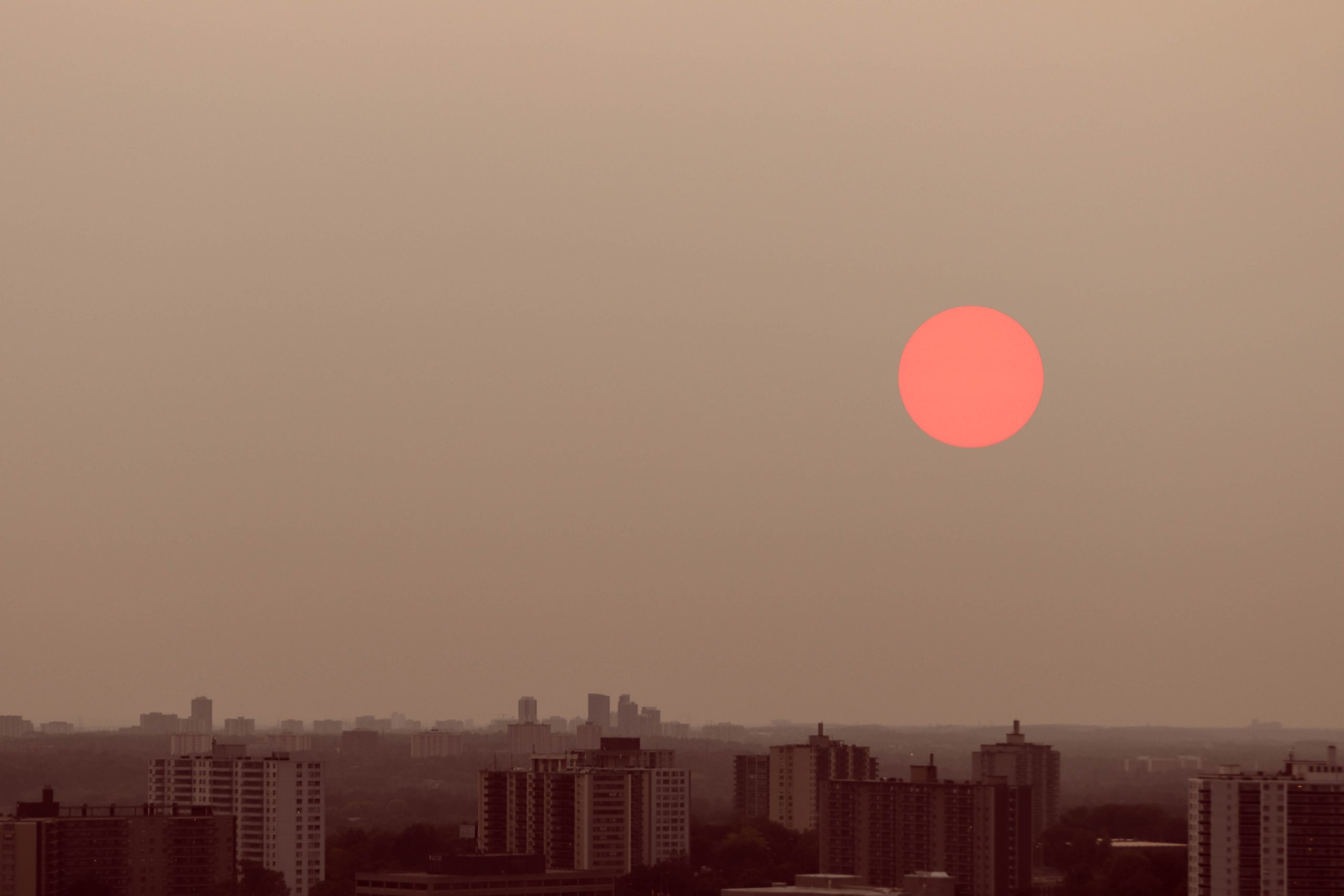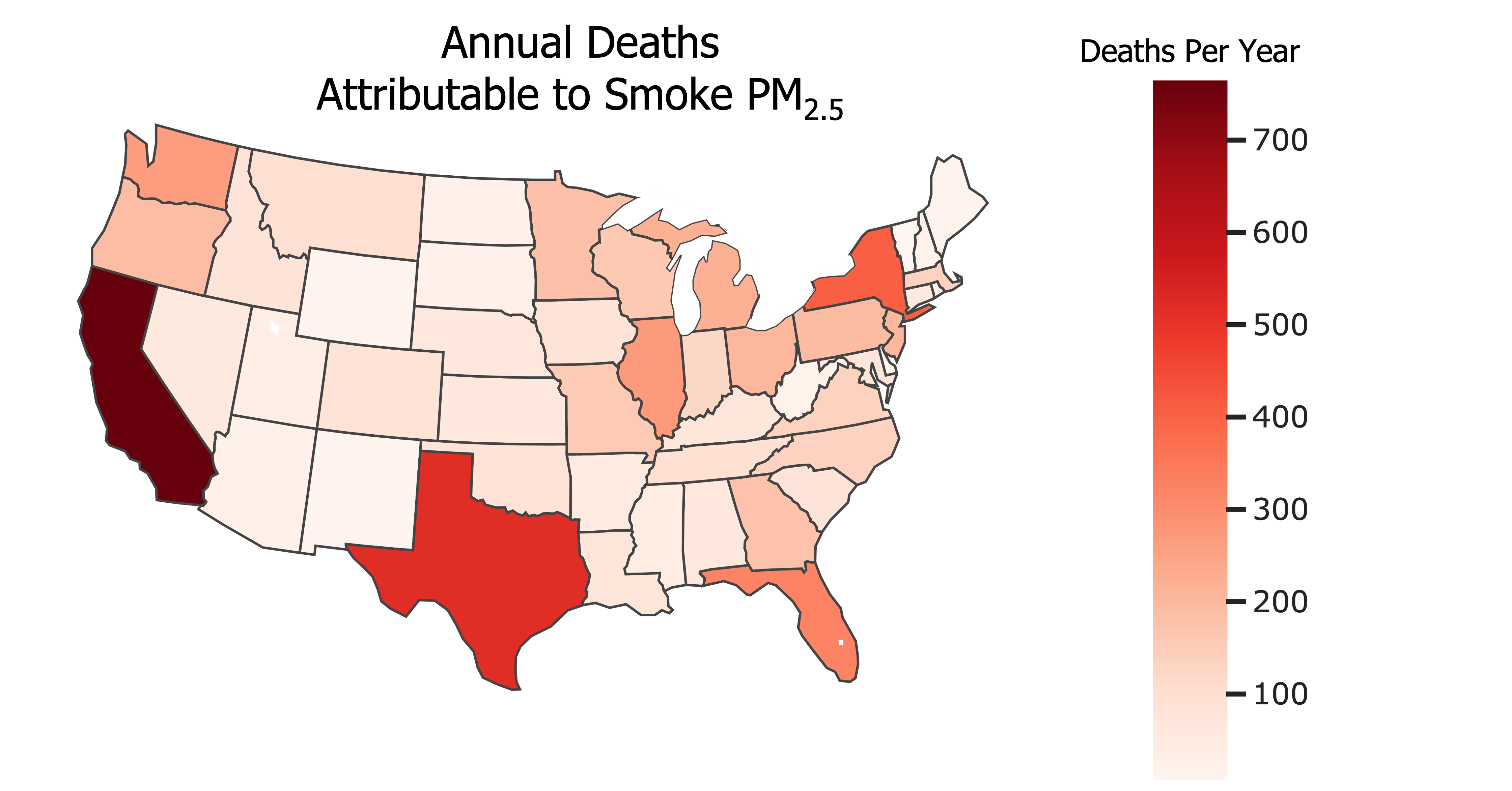
Wildfires in western Canada cause hazy skies and a bright red sun in Toronto.
Credit: DESIGNECOLOGIST
While most of the largest U.S. wildfires occur in the Western U.S., almost three-quarters of the smoke-related deaths and visits to the emergency room for asthma occur east of the Rocky Mountains.
Smoke exposure, whether from wildfires or local burning, contributes to health problems across the U.S., but the impacts vary by region. A new study finds that smoke contributes to a larger percentage of health problems in the West, but affects greater numbers of people in the East - possibly when they aren't even aware of the smoky air.
The new study was published in GeoHealth, AGU's journal investigating the intersection of human and planetary health for a sustainable future.
In the West, where population density is generally lower and smoke concentrations are typically higher, smoke played a larger role in the number of asthma complaints and ER visits, contributing to more than 1% of annual visits in some years. In the East, with its high population density and lower smoke concentrations, there were a higher number of visits overall, even though a smaller percentage were related to smoke (0.3% to 0.6%).
The researchers estimate that long-term smoke exposure results in about 6,300 extra deaths each year, with the highest numbers occurring in the most populous states. Only 1,700 of those deaths occurred in the West.
Fires throw tremendous amounts of pollutants into the air, including toxic gases and soot. Smoke contains tiny particles smaller than 2.5 microns, called PM2.5, that enter the lungs and contribute to multiple health problems. Short-term exposure to PM2.5 from smoke is linked to respiratory health problems, like asthma attacks, and the long-term effects of PM2.5 from smoke are not fully understood. Research on PM2.5 from urban pollution suggests that exposure is linked to lung cancer, heart disease and an overall higher chance of death.
"Large wildfires are projected to increase in frequency and burned area in the Western U.S. Because of that, and projected decreases in urban-sourced PM2.5, fires are expected to become the dominant source of PM2.5 in the U.S. by the end of the century," said atmospheric scientist and first author Katelyn O'Dell. O'Dell was formerly a graduate student at Colorado State University but is now a postdoctoral researcher at George Washington University. "We wanted to study the impacts of wildfire smoke specifically on health so we can better prepare for that future, when we expect to have more smoke in our lives."
O'Dell collaborated with epidemiologists at Colorado State University to perform a health impact assessment. The researchers estimated the fraction of asthma ER visits and hospitalizations resulting from PM2.5 in smoke across the country from 2006 to 2018. They used existing data on asthma hospital visits and daily local estimates of PM2.5 based on readings from instruments at ground level and satellite data showing the location of smoke in the atmosphere.

Although Western states have higher concentrations of smoke PM2.5, Eastern states have higher numbers of deaths due to smoke PM2.5.
Credit: Katelyn O'Dell
The new study also included the first analysis of the health impacts of 18 hazardous air pollutants (HAPs) present in smoke, such as formaldehyde and benzene. The researchers determined that HAPs are likely a less important but more uncertain factor than PM2.5 in the health problems caused by smoke exposure.
As smoke pollution is likely to increase, the researchers argue that the U.S. needs better national smoke forecasting and alerts so that people in downwind regions know when to take precautions like wearing a mask, limiting time outside and using indoor air purifiers.
"We talk about smoke in the West so much, but we don't often talk about smoke in the East," O'Dell said. "I wonder if there's a lack of awareness because you think, 'Oh, that's a Western problem.'"
O'Dell emphasized that their study didn't determine the source of the smoke affecting each region and that local burning and Canadian fires also contribute to smoky air in the Eastern U.S. She said that establishing the source of the smoke impacting health in each region is an important next step.
Tarik Benmarhnia, a climate change epidemiologist at the University of California, San Diego, who was not involved in the study, agreed that we need better smoke warning systems, especially for farm workers and others who labor outside. He pointed out that while smoke plumes impact entire regions, they don't affect all residents equally. Age, race, ethnicity, exposure to other types of air pollution-such as from traffic-and pre-existing health conditions can all put a person at higher risk of developing health problems from smoke. He said that future research should investigate these disparities.
"The conclusion of the study is important," said Benmarhnia, "We systematically underestimate the real public health impact of wildfires, which is related to smoke. And smoke can travel very, very far away."






